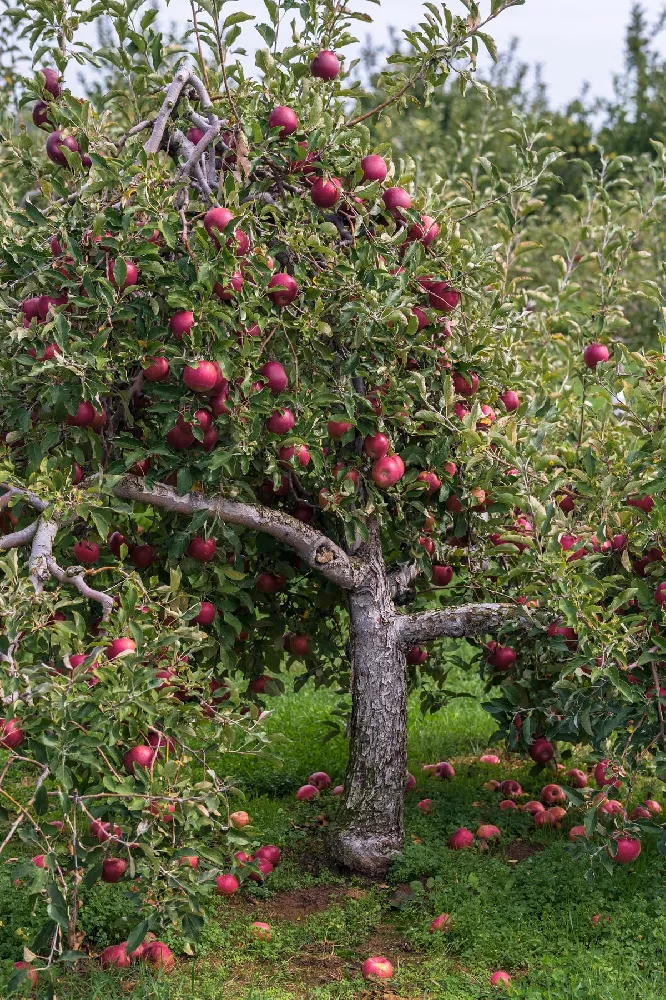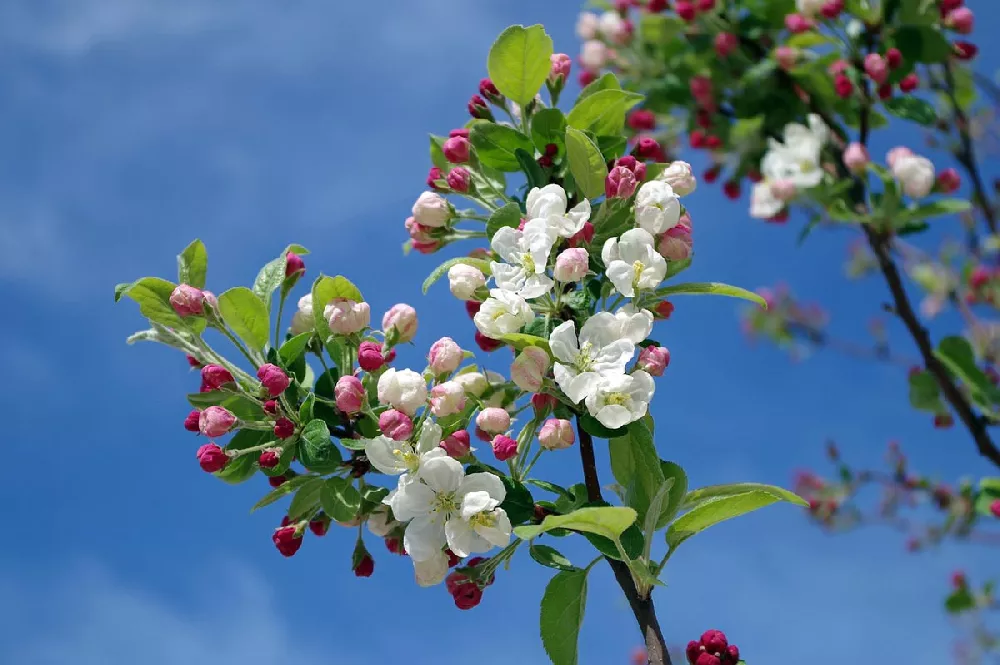- Home >
- Apple Trees >
- Pink Lady Apple Tree
Pink Lady Apple Tree for Sale - Buying & Growing Guide
- Ships in 1-2 days
- 1-Year Warranty Eligible
- Pots or accessories are not included unless specified in the product options.
Shipping Details:
Once your order is shipped, you’ll receive an email with a tracking number and estimated delivery date. Most orders ship immediately, but some items are seasonal and may only ship in spring or fall. These products are noted on the website.
Although there is no lack of apple varieties available to choose from, the pink lady apple tree, Malus domestica 'Cripps Pink,' is one of the best options for anyone who would like to try growing fruit. It's an easy-care tree that stays relatively small and doesn't require a lot of fussing over. It offers three seasons of beauty: pink-to-white flowers in spring; attractive, full foliage in the summer; and vivid orange, yellow, and maroon leaves in the fall. Autumn also brings your crop of apples, which are delicious — sweet with just a hint of tart flavor, perfect for snacking, and an excellent choice for baking. The pink lady apple tree should also appeal to gardeners in the southern states since it requires fewer chill hours than most apples and can be grown as far south as Florida and Texas. Here are a few more reasons to try your own pink lady apple tree:
- Fragrant flowers attract pollinators such as bees, butterflies, and hummingbirds.
- Trees are grafted onto sturdy, semi-dwarf rootstock, ensuring increased health and productivity.
- The sweet-tart apples are perfect dessert fruits.
Plant Care
Sunlight

The Pink lady apple tree loves sun. Plant it where it will get at least six hours of direct light a day.
Watering
Water weekly, or more often if you're experiencing a drought, giving it 1 inch of water each time.
Fertilizing

Fertilize with a product designed for fruit trees, applying throughout the growing season.
Planting and Care
Planting instructions
Choose a site for your pink lady apple tree with well-draining soil and full sun exposure. Unpot the sapling and tease out any encircling roots, which can girdle the tree and slowly kill it. Dig a hole that’s as deep as the root ball and twice as wide. Place the tree in the hole, spreading out the roots. While holding it upright and steady, fill in around the roots with topsoil. Tamp down soil as you go to eliminate air pockets. Water thoroughly. Apply a 2- to 3-inch layer of mulch around the root zone to conserve moisture and hinder weed growth, being careful that it does not touch the trunk.
Watering and nutrients
For the first weeks after planting, water your tree every few days. Once you see robust new growth on the tree, you can scale back watering to once a week. If you’re experiencing very hot or drought-like conditions, it may need additional watering. Check by digging down about 2 inches. If the soil is dry at that depth, give your tree a drink. Fertilize your apple tree throughout the growing season with a product that is designed specifically for fruit trees.
Pollination
Pink lady apple trees, like most fruit trees, are not self-fertile. That means you will need at least two trees, which are cross-pollinated by bees and other insects. Good pollinators for the pink lady include the Gala apple tree, the Fuji apple tree, and the Granny Smith apple tree.
Pruning
Your pink lady apple tree needs regular pruning, which is best done in late winter or early spring, before bud break. Remove any dead, diseased, or damaged limbs, as well as those that are growing vertically. Remove any suckers that sprout from the base of the trunk as well as branches that are too low. Pruning off about one-third of the remaining branches will encourage new growth and aid production.
Pests, diseases, and animals
The best way to deal with pests and diseases is to ensure that your tree is healthy and well-fed and watered so that it’s able to handle stressors itself. Common pests include aphids, apple maggots, and codling moths. Horticultural oil or a chemical insecticide can help control them. Diseases of the apple include anthracnose, bitter rot, and fire blight. A copper fungicide may help with any of these. Animals that are drawn to apple trees for their fruit include deer and rodents, such as squirrels and rabbits.
Harvesting
Your pink lady apple tree may have a light harvest in the first year after planting, but it will take several years before it has grown enough for a full harvest. You’ll know your apples are ready for picking when they develop a pinkish-red color and taste sweet. Ripe apples will release easily from the tree with a swift upward pull. Handle the fruit carefully and store it in a cool, high-moisture environment.
Achieving maximum results
Many gardeners find pruning fruit trees to be a challenge, but it doesn’t have to be. Seasoned fruit tree growers know that there is no one right or wrong way to prune your tree, and if you make a mistake, your tree will not be harmed by it. Prune your apple tree to a central leader shape. This means there is one strong, central branch that arises from the trunk, with other, secondary branches all radiating out from it. When making your cuts, keep them sharp and clean, and cut about a quarter-inch away from an outward-facing bud. Slant each cut away from the bud, and it will encourage growth. You may also need to prune to thin out fruit, especially when the tree is still young and growing. Thin so that fruit is spaced 6 to 8 inches apart on each branch.
FAQs
Where can I grow pink lady apple tree?
How fast does a pink lady apple tree grow?
The pink lady apple tree has a moderate rate of growth, and until it reaches its mature size of 15 to 20 feet, it will put on 12 to 18 inches of new growth on branches that are not bearing fruit and 8 to 12 inches of growth on those that do have fruit. Your tree should be nearing its full size in about a decade or so.
Is the pink lady apple tree an heirloom?
No, this versatile tree was developed first in Australia and was released for commercial use in 1989. It is a cross between two older apple varieties, Lady Williams and Golden Delicious, and was developed by horticulturalists who were looking for a sweet, crisp apple that stored well.
Compare Similar Products
You can't add more Product Name - Product size to the cart.
OK








